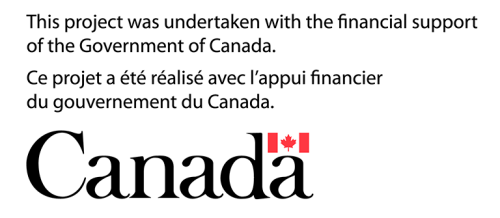Concordia researcher leads a report on the state of climate action in Canadian cities

Canadian cities are responsible for more than half of Canada’s greenhouse gas emissions, according to a study from the Federation of Canadian Municipalities. This makes them major players in the fight against climate change.
But getting a bird’s eye view of climate action across Canadian cities has been a challenge due to a lack of centralized information.
As part of the Municipal Net-Zero Action Research Partnership (N-ZAP), Concordia researcher Adriane MacDonald designed and led a four-month survey of 256 municipalities across 10 provinces. Together they represent about 69.5 per cent of the Canadian population.
The survey asked cities to report on their current and planned climate action, greenhouse gas emission inventories, policies and stakeholder engagement initiatives.
“Thanks to this survey, we now have a better idea of where we are and where we need to go to meet Canada’s goal of net-zero emissions by 2050,” says MacDonald, an associate professor of management at the John Molson School of Business and Canada Research Chair in Governance and Sustainability.
The results of the survey are the basis of the report, The State of Climate Action in Canadian Municipalities: A Report from the Municipal Net-Zero Action Research Partnership (N-ZAP), written with co-lead authors Ying Zhou, a PhD candidate at the University of Waterloo, and Lindsay Telfer from the Federation of Canadian Municipalities.
The survey also informed a database, which pulls together the climate action initiatives undertaken by cities across the country, making it possible to see what works and what doesn’t and provide the tools for cities to more easily plan, report and act on climate change.
The report and database officially launched on May 27.
“This report and database equip cities and policymakers with the information they need to implement the most impactful climate actions,” MacDonald says.
The survey will be sent out again in 2027 to gauge cities’ progress in meeting municipal climate action targets.
 Concordia researcher Adriane MacDonald. | Photo: David Ward
Concordia researcher Adriane MacDonald. | Photo: David Ward
5 key areas of focus
The report found five key areas where cities can focus to get to net-zero faster:
- Better alignment with Canada’s net-zero by 2050 target: The survey revealed a need for more cities to commit to net-zero targets and action. Of those surveyed, only 27 per cent pledged net-zero corporate emissions by 2050 or earlier and only 25.1 per cent promised net-zero community emissions by that date or earlier.
- Measuring and monitoring emissions: Greenhouse-gas emission inventories are crucial in monitoring progress toward net-zero. This type of inventory is a list of emission sources and their outputs, which is quantified in a standardized way. Developing such an inventory is a big undertaking, says MacDonald, and while she’s encouraged by the number of cities that do have them, she adds that more resources are needed to get that number up.
- Getting more people involved: Cities are successful in collaborating with internal stakeholders, like government staff and elected officials. There is meaningful exchange with external stakeholders, like local businesses and nonprofits, too. But the survey found little engagement with Indigenous groups as well as local, provincial and federal governments.
- Support for small, remote communities: Some smaller, more rural communities reported taking no climate action at all. More support is needed to ensure all municipalities are working toward the shared goal of net-zero by 2050.
- More meaningful actions: Voluntary action and general awareness and education have been the tactics of choice for decades. The survey found that to really move the dial, cities need to introduce more innovative initiatives that align with Canada’s target of net-zero by 2050.
The next step is to review the data from the survey in more depth, with a focus on identifying what initiatives contribute the most to achieving net-zero.
N-ZAP is a research partnership funded in part by the Government of Canada through the Climate Action and Awareness Fund. It is jointly led by the University of Waterloo, the Federation of Canadian Municipalities’ Green Municipal Fund and ICLEI Canada, working with 11 other academic institutions, eight national organizations and 13 municipal partners.
N-ZAP is made up of five working groups that include academics, municipal representatives and organizations. They collaborate but each also has a specific focus.
The survey and report were the first deliverable from working group 1. The group’s goal was to determine where Canadian cities currently stand on climate action, including their greenhouse gas emission targets, planning and execution of initiatives and ways to measure success.
Read the full report: The State of Climate Action in Canadian Municipalities: A Report from the Municipal Net-Zero Action Research Partnership (N-ZAP).
Visit the new N-ZAP database.
Learn more about Concordia’s commitment to the United Nations Sustainable Development Goals.



